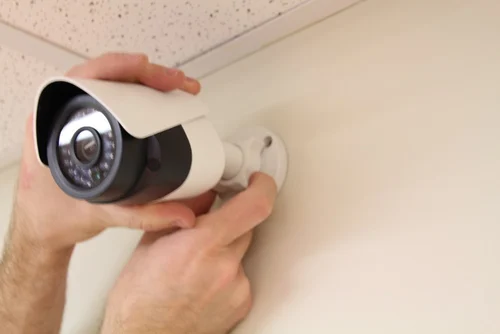In an era where security is paramount, technology has emerged as a powerful ally in safeguarding the homes, businesses, and public spaces. Security camera systems have become the cornerstone of modern safety measures, providing unmatched surveillance capabilities that extend beyond traditional boundaries. As the world continues to evolve, so do the demands for innovative and comprehensive security solutions. One of the key advantages of contemporary security camera systems lies in their ability to transcend physical limitations. Unlike conventional security measures, such as manned patrols or static guards, these systems can monitor vast areas simultaneously, breaking free from the constraints of human capacity. Cutting-edge technologies, such as artificial intelligence and advanced analytics, enable these cameras to detect anomalies, recognize faces, and respond to potential threats in real-time. The versatility of security camera systems extends their reach beyond mere property protection. They serve as invaluable tools in crime prevention and investigation. With high-definition video recording capabilities, these systems capture crystal-clear footage that can be pivotal in identifying perpetrators and providing evidence for legal proceedings.
 In this way, they act as silent sentinels, deterring criminal activities and ensuring swift responses when incidents occur. Moreover, security camera systems are not limited to indoor environments they can seamlessly integrate with outdoor spaces, enhancing overall safety. From parking lots to public parks, these cameras keep a vigilant eye on areas that were once vulnerable to criminal activities. The integration of weather-resistant features ensures that these systems can operate effectively in various conditions, expanding their application to diverse environments. The advent of wireless technology has also played a significant role in pushing the boundaries of security camera systems and read more here. Wireless cameras eliminate the need for complex wiring infrastructure, allowing for flexible installations and rapid deployment. This flexibility is particularly advantageous for temporary events, construction sites, or areas where a permanent setup is impractical. Additionally, the wireless connectivity facilitates remote monitoring, enabling users to access live feeds and alerts from anywhere in the world through smartphones or computers. Privacy concerns have often been a focal point in discussions surrounding surveillance technology.
In this way, they act as silent sentinels, deterring criminal activities and ensuring swift responses when incidents occur. Moreover, security camera systems are not limited to indoor environments they can seamlessly integrate with outdoor spaces, enhancing overall safety. From parking lots to public parks, these cameras keep a vigilant eye on areas that were once vulnerable to criminal activities. The integration of weather-resistant features ensures that these systems can operate effectively in various conditions, expanding their application to diverse environments. The advent of wireless technology has also played a significant role in pushing the boundaries of security camera systems and read more here. Wireless cameras eliminate the need for complex wiring infrastructure, allowing for flexible installations and rapid deployment. This flexibility is particularly advantageous for temporary events, construction sites, or areas where a permanent setup is impractical. Additionally, the wireless connectivity facilitates remote monitoring, enabling users to access live feeds and alerts from anywhere in the world through smartphones or computers. Privacy concerns have often been a focal point in discussions surrounding surveillance technology.
However, advancements in security camera systems have also addressed these apprehensions. Features such as privacy masking and user authentication protocols ensure that the surveillance is conducted ethically and within legal boundaries. This not only safeguards the privacy of individuals but also fosters public acceptance of these systems as vital tools for collective security. As smart cities continue to emerge, the integration of security camera systems becomes even more crucial. These systems play a pivotal role in urban planning, traffic management, and emergency response. By creating a comprehensive network of interconnected cameras, cities can enhance their ability to monitor and respond to potential threats, ensuring the safety of their residents on a broader scale. Security camera systems have transcended traditional boundaries, emerging as indispensable tools for unmatched safety. Their ability to monitor vast areas, utilize advanced technologies, and adapt to diverse environments positions them as frontline defenders in the realm of security. As technology continues to advance, the potential for innovation in security camera systems remains boundless, promising a future where safety knows no limits.

